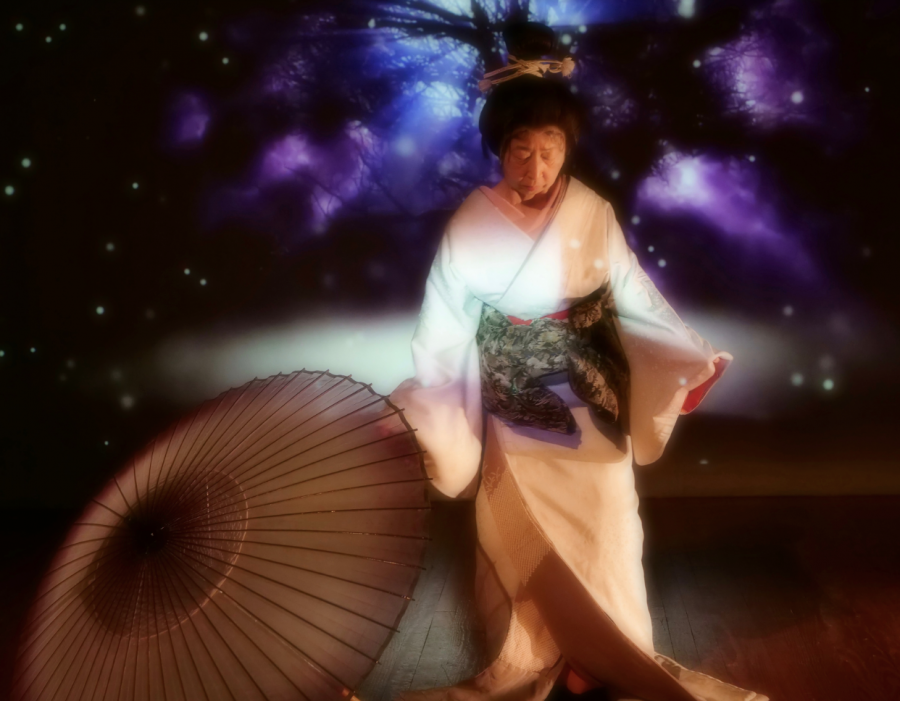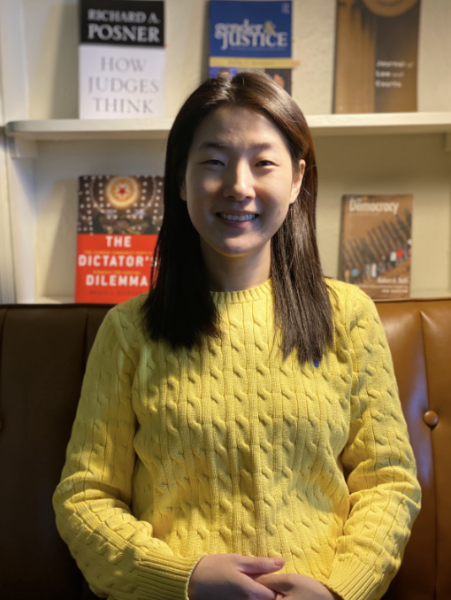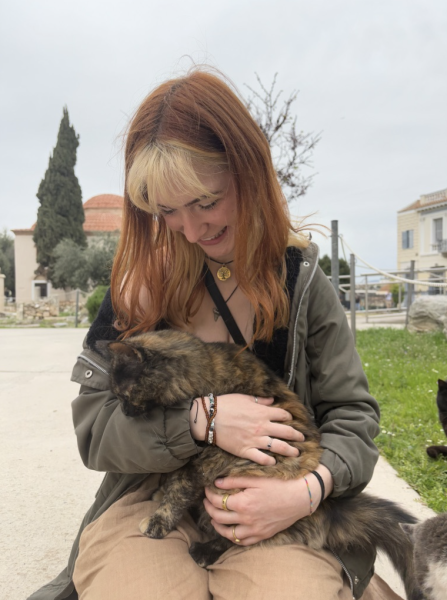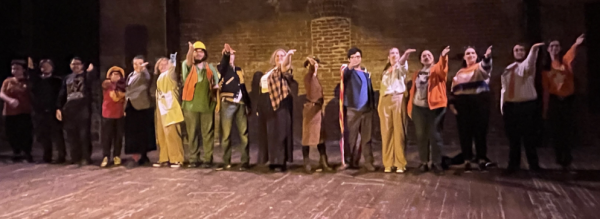“Sakura” Makes A Plea For Peace
Moravian College hosted the American premiere of “Sakura: Requiem for Hiroshima and Nagasaki” by Keiin Yoshimura on April 6 in Prosser Auditorium. The performance was sponsored by the Moravian College Theatre Company, Touchstone Theatre, the InFocus Program, and the U.S.-Japan Creative Artists Fellowship.
Yoshimura is a Japanese performance artist who has studied traditional Japanese performance styles, such as Noh and Kyogen, as well as martial arts. Her own performance style, Kamigata-mai, was developed in 16th-century Japan. This style combines elements of Noh and Kyogen, but while those performances were typically performed by men only, Kamigata-mai is performed primarily by women.
Before the performance of “Sakura,” audience members received a sheet of paper with translations of poems by Sankichi Toge, a survivor of the atomic bomb, all of which were featured in Yoshimura’s piece. These poems, written by Toge in 1951, depicted the devastation that Hiroshima and Nagasaki faced. The audience was then asked to put away the translations and focus on the performance itself.
Yoshimura’s piece had several influences from Kamigata-mai and other Japanese performance styles, especially in the costumes that she wore and in her dance techniques, but she fused these traditional styles with modern ones. “Sakura” featured video projection throughout almost the entire piece in addition to voice-overs, where Yoshimura read Toge’s poems. The combination of classical and contemporary styles worked together to make a statement that every generation should strive for peace.
Though “Sakura” deals with the grief and atrocity of the atomic bomb and Yoshimura portrays the deep emotional effects, her work is ultimately about rebirth and recovering from loss. The consequences of such a violent act are clear in the performance, but Yoshimura’s ultimate message was that we, as a society, need to learn from our wrongdoings and strive towards a better future.
Per Yoshimura’s wishes, the audience did not clap after the performance. Instead, they were asked to close their eyes and pray for universal peace with the hope that when they opened their eyes again, they would take the message of the performance home with them. “Sakura” itself translates to cherry blossom, which is symbolic of peace, and in the program Yoshimura requested that the audience take “the petal of SAKURA deep into your heart.”
After the performance, the audience was invited to speak with Yoshimura and ask her any questions about the piece they had. Yoshimura was gracious and insightful during this process, treating students and professors alike with respect. The conversation centered around promoting understanding and ways in which people can come together to ensure that something like the atomic bomb does not happen again.
For more information about ending nuclear violence, visit https://www.peacinstitute.org/endnukesnow.






